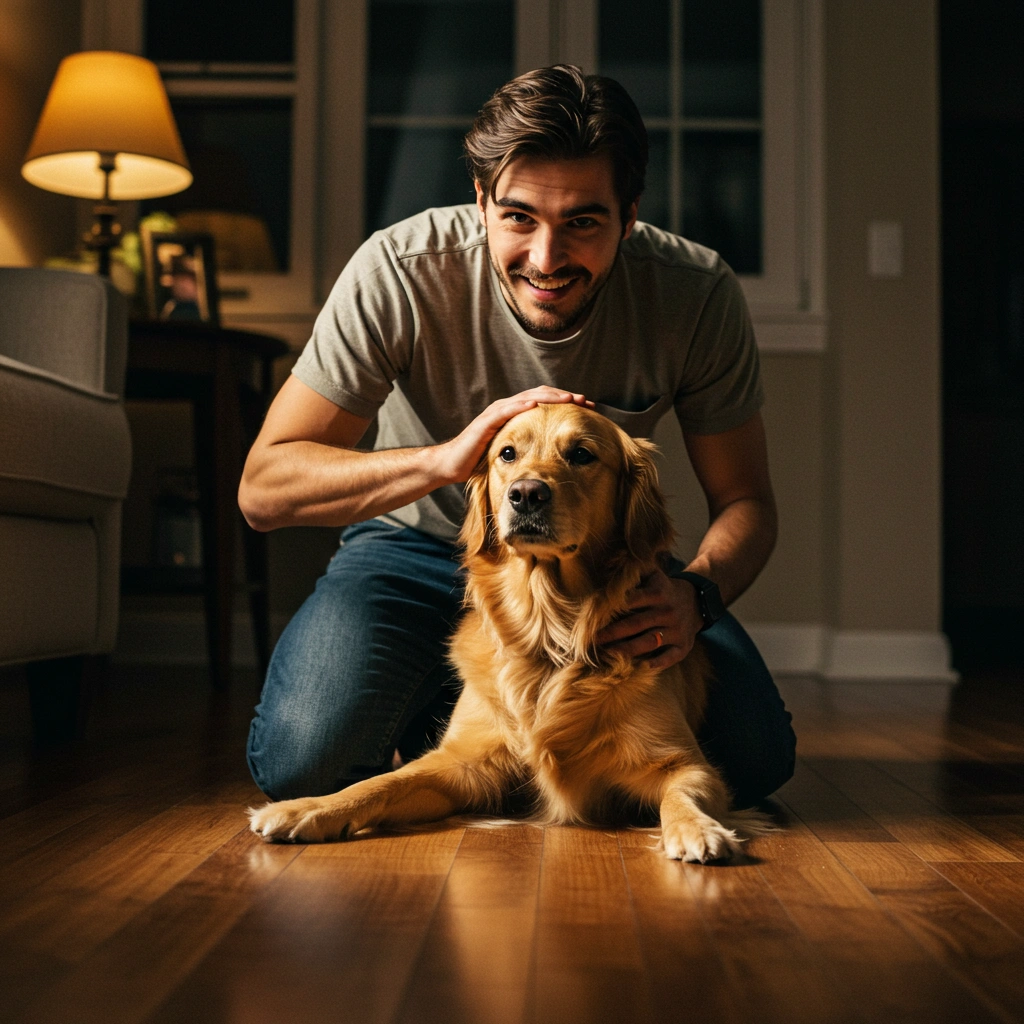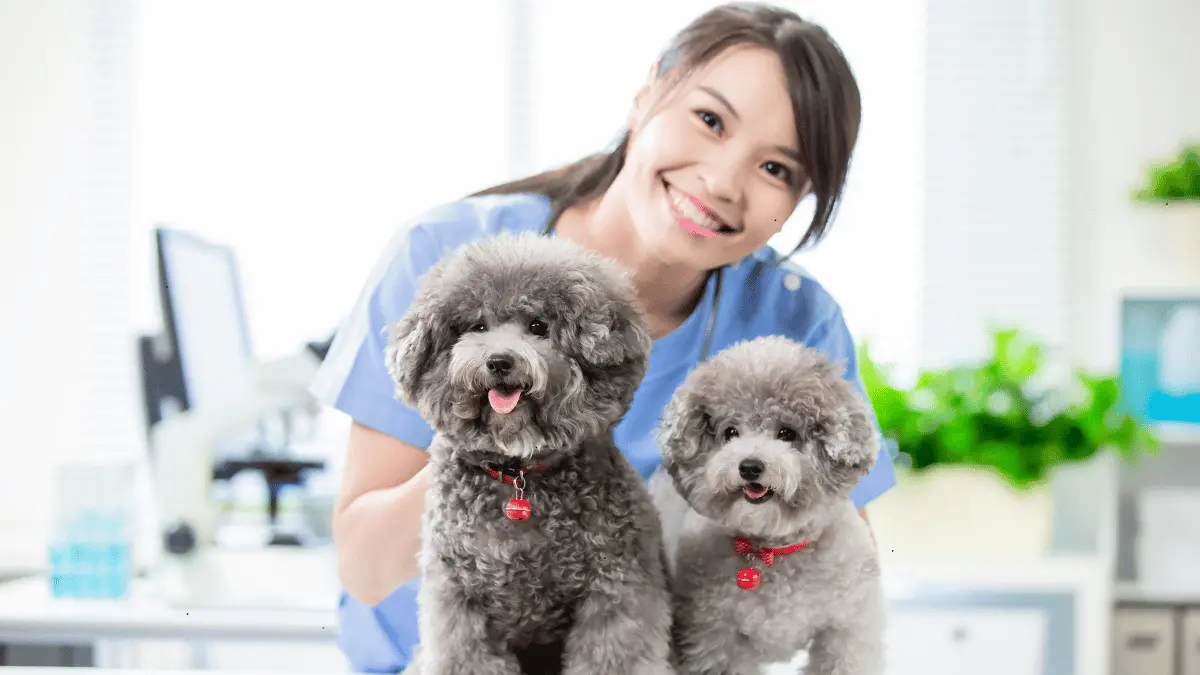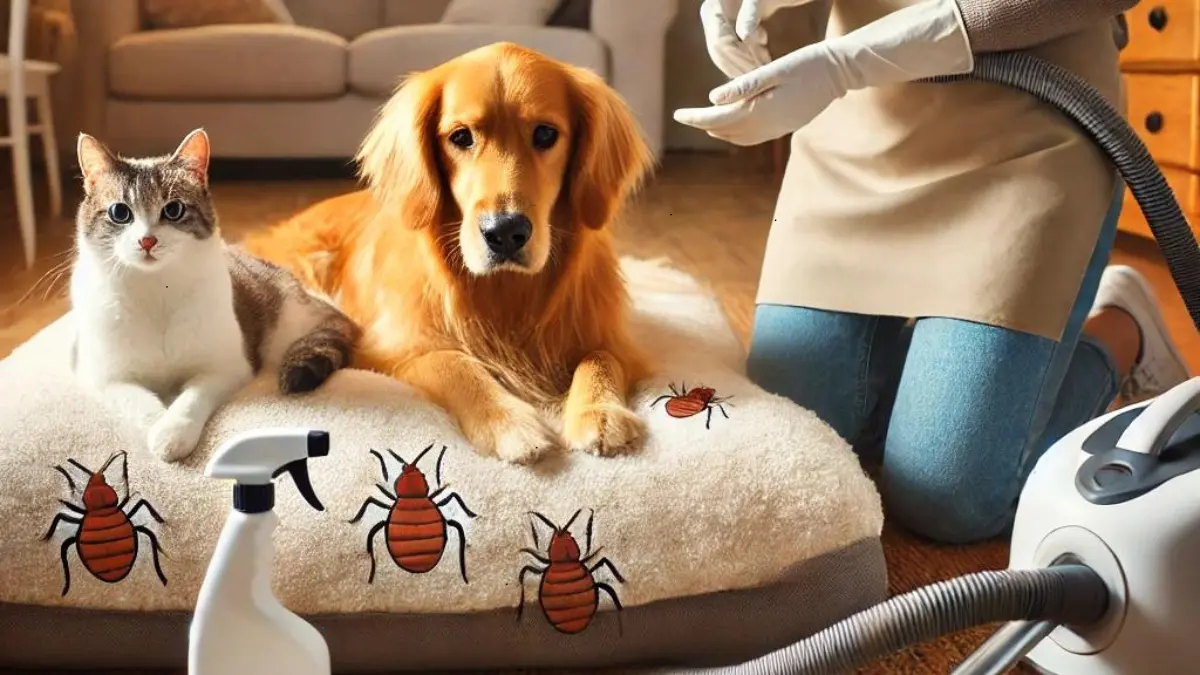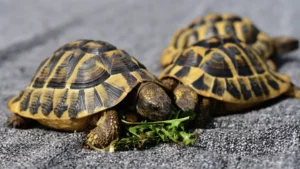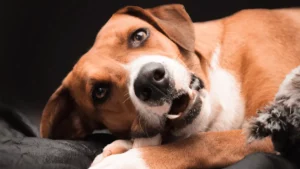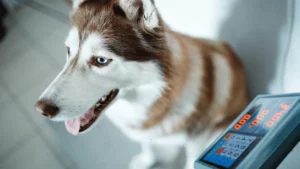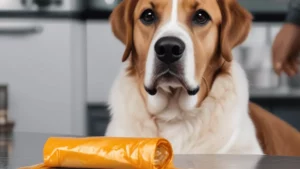Pet Owner Mirroring
Discover how pet owner mirroring influences your pet’s behavior, emotions, and well-being, strengthening your bond.
Written by guest author Bruce Graham from www.poshpawcare.com
Have you ever noticed that a calm and introverted person often has a relaxed, independent cat, while an energetic, outgoing owner might have a hyperactive dog? It’s not a coincidence—scientific research suggests that pets can take on the personalities, habits, and even emotional states of their humans. This phenomenon is often referred to as “emotional mirroring,” and it extends beyond just stress levels to behavioral traits, energy levels, and even health patterns.
The Science Behind It
Studies have found that dogs, in particular, reflect their owners’ emotions and stress levels. A 2019 study from Linköping University in Sweden revealed that dogs and their owners often share similar stress hormone levels. When an owner experiences high stress, their pet can mirror that anxiety. Interestingly, the study found that while owners influence their dogs’ stress levels, the reverse was not necessarily true. This suggests that dogs are highly attuned to their owners’ emotional states, rather than shaping them (Phys.org).
How Pets Learn From Us
The mechanisms behind this mirroring effect can be attributed to a mix of social learning, environmental conditioning, and genetic predisposition. Pets can be highly perceptive and constantly observe their owners for cues on how to behave. Here are some of the main ways they do this:
- Emotional Contagion
Animals, especially dogs, can sense human emotions and respond accordingly. If you’re feeling anxious, your pet may become more restless or clingy. Research suggests that animals have mirror neurons, which help them empathize with and imitate human emotions.
- Routine and Behavior Modeling
Pets observe and learn from their owners’ habits. If you’re an early riser who loves to exercise, your dog may wake up eagerly, expecting a morning walk. If you’re more of a night owl, your cat might adjust to your late-night schedule.
- Vocal and Body Language Cues
Your tone of voice, body language, and facial expressions influence how your pet behaves. Animals attuned to human interactions often reflect their owner’s emotional states in real time.
- Physiological Synchronization
There is increasing evidence that pets’ heart rates and cortisol levels can sync up with their owners, showing that they internalize stress and relaxation alike.
Cats Reflecting Owner Traits
A study from Nottingham Trent University and the University of Lincoln surveyed over 3,000 cat owners, assessing both feline behaviors and owner personalities using the Big Five Inventory. The results showed that cats often exhibit behaviors aligning with their owners’ personality traits. For example, owners who scored high in neuroticism tended to have cats displaying behavioral issues, while more extroverted owners had cats that enjoyed outdoor activities. This suggests that the emotional environment provided by the owner significantly influences a cat’s behavior and well-being (Martha Stewart).
Mutual Influence and Selection
The interplay between pet and owner personalities is bidirectional. Owners often select pets that complement their own lifestyles and dispositions, either consciously or subconsciously. For example, an active individual might choose a high-energy dog breed, while someone seeking relaxation might prefer a more laid-back pet. Over time, shared environments and routines can further synchronize behaviors and emotional responses between pets and their owners (PetMD).
Moreover, recent research indicates that some genetic traits in pets, such as temperament and resilience, may be influenced by early exposure to human behaviors. For instance, puppies raised in stressful households may grow up to be more anxious dogs, even if their genetic predisposition did not necessarily indicate such behavior.
Expanding Beyond Dogs and Cats
While dogs and cats are the most commonly studied pets in terms of mirroring their owners’ personalities, other domesticated animals also exhibit this phenomenon. Understanding these dynamics can provide deeper insights into human-animal relationships across various species.
Birds: Parrots and Their Owners
Parrots are known for their advanced cognitive abilities and social nature. They often form strong bonds with their human caregivers, leading to notable behavioral mirroring:
- Vocal Mimicry: Parrots frequently imitate the speech patterns, tone, and even specific phrases of their owners. This mimicry can reflect the owner’s emotional state, language use, and social interactions.
- Emotional Synchrony: Parrots can sense their owner’s moods and may become agitated during times of stress or exhibit calmness when their owner is relaxed. This emotional attunement enhances the bond between the bird and the human.
Small Mammals: Rabbits and Guinea Pigs
Though less overtly expressive than dogs or parrots, small mammals like rabbits and guinea pigs also mirror their owners in subtle ways:
- Behavioral Responses: These animals can become accustomed to their owner’s routines and may exhibit excitement during feeding times or become more active during periods when the household is lively.
- Stress Indicators: In environments where owners are frequently stressed or loud, rabbits and guinea pigs might display signs of anxiety, such as excessive hiding or reduced appetite. Conversely, a calm household can promote more relaxed behavior in these pets.
Equines: Horses and Their Riders
The relationship between horses and humans is profound, especially given their history of collaboration in work, sport, and therapy:
- Emotional Bonding: Horses are highly perceptive and can sense their rider’s emotions. A nervous rider might inadvertently cause a horse to become skittish, while a confident rider can instill a sense of calm in the animal.
- Behavioral Conditioning: Over time, horses can adapt to the behavioral cues of their handlers, leading to synchronized routines and mutual understanding during activities like riding or grooming.
Fish: Aquarium Companions
While fish are often perceived as less interactive, studies suggest they can be influenced by their owners:
- Recognition: Certain fish species can recognize their owners and may swim to the front of the tank during feeding times or in response to their presence.
- Environmental Response: The care provided by the owner, including tank maintenance and feeding routines, directly impacts the fish’s behavior and health, reflecting the owner’s attentiveness and consistency.
Reptiles: Lizards and Snakes
Reptiles, though often solitary, can exhibit behaviors that mirror their owner’s routines:
- Habituation: Regular handling and interaction can lead reptiles to become more accustomed to human presence, reducing stress behaviors and increasing feeding responses.
- Routine Adaptation: Reptiles may become active during times when they anticipate feeding or handling, aligning their behaviors with their owner’s schedule.
Factors Influencing Cross-Species Mirroring
Several factors contribute to the mirroring of behaviors and emotions across different pet species:
- Socialization: Early and consistent positive interactions between the pet and owner can enhance the degree of behavioral mirroring.
- Environmental Consistency: A stable environment with predictable routines fosters a sense of security in pets, leading to behaviors that reflect the household’s rhythm.
- Owner Attentiveness: Owners who are observant and responsive to their pet’s needs encourage a reciprocal relationship, where pets become attuned to their owner’s cues and vice versa.
Implications for Pet Welfare
Understanding this mirroring effect has practical implications. Recognizing that pets can absorb and reflect their owners’ emotional states underscores the importance of fostering a positive environment. Owners should be mindful of their own stress and emotional well-being, as it can directly influence their pets. Additionally, selecting a pet whose natural disposition aligns with the owner’s lifestyle can lead to a more harmonious relationship and improved well-being for both parties.
To enhance this positive exchange, pet owners can take specific actions:
- Engage in mutual stress relief – Activities such as playtime, pet massage, and outdoor walks can help reduce stress for both humans and animals.
- Maintain a consistent routine – Stability provides a sense of security for pets and prevents them from absorbing unnecessary anxiety.
- Be mindful of energy transfer – Just as a calm owner can help a nervous pet, an anxious owner can inadvertently increase their pet’s distress.
- Practice socialization and mental enrichment – Providing stimulation through training, social interactions, and new environments can prevent behavioral problems.
Final Thoughts
The bond between humans and their pets goes deeper than companionship—it’s a psychological and emotional exchange. By understanding how your pet reflects your own habits and emotions, you can create a more harmonious relationship that benefits both of you. The more we learn about this connection, the better we can enhance the lives of both pets and their owners. Ultimately, recognizing that our actions, emotions, and routines influence our pets can help us become more responsible, empathetic, and effective caregivers.
Conclusion
The phenomenon of pets mirroring their owners’ personalities and behaviors extends beyond traditional companion animals like dogs and cats. Birds, small mammals, horses, fish, and reptiles all demonstrate varying degrees of this mirroring effect. Recognizing and understanding these dynamics can lead to more fulfilling and harmonious relationships between humans and their diverse animal companions.
Sources
- https://phys.org/news/2019-06-dogs-mirror-owner-stress.html
- https://www.marthastewart.com/1536900/cats-mirror-owners-personalities-new-study
- https://www.petmd.com/dog/pet-lover/how-much-dogs-personality-comes-their-owner
More Pet-Related Content from Bruce Graham
FB Forum Pet Loss – (https://www.facebook.com/profile.php?id=61567302946123)
Books, (published under the pen-name Richard Turner):
- https://tinyurl.com/4ts5zypy Recovery from Pet Loss For Adults and Children: Understand Grief, Discover Simple and Effective Coping Mechanisms, and Lose Feelings of Guilt so you Learn to Heal Through Memories, Love, and Support
- https://tinyurl.com/yeutdfc8 Forever Furry: 11 Creative Ways to Remember Your Pet: A Handbook Explaining how to create memorable and lasting ways to Honor Your Pet When They’ve Gone
Bruce Graham – Bio

Bruce has been a lifelong pet owner, and had to go through the naming process countless times.
His journey with pets began with a goldfish won at a country fair, which, when home, lived an all too short life in a classic goldfish bowl, with a little bridge. It was named with typical childish lack of imagination as “Goldfish” It was found floating on top of the water 3 days later, and was his first experience of losing a pet.
It was replaced by another, until the tank was upgraded, and housed a wonderful shoal of three goldfish, all of whom regularly and enthusiastically swam under the bridge.
In his teens, he owned a variety of small rodents, including mice, and two gerbils, (Fatty and Thinny.)
Between the ages of 20 and 58 he had a variety of cats, all of whom seemed to choose more and more elaborate and unique ways to end their lives. Scrumpy, (who returned home twice after being taken by my 1st wife post-divorce), my “boy cat” Arnie, (who turned out to be female), Pipsamillion (Pippa), which went to sleep on a neighbour’s driveway, and was delivered back to me in a pizza box (!), Fwuffles, who decided to have a fight with another cat in the road, and as they pounced on each other were BOTH hit by a car, (extra points), Ella (who decided to live in my garage after my late-wife got a dog, and passed away in an old washing basket, and Bobbie who only ever went “Miaow” as the vet ended her suffering.
He currently owns a 13-year-old Cavachon dog, who is rapidly aging.
Over the years, he has experienced the highs and lows of pet ownership, including the heartache of losing many he cherished as beloved companions. He wrote this book to share his experiences and to help others navigate the emotional minefield of pet loss with compassion and understanding.
My family once owned two tiny piglets called bacon and sausage. I have never been able to get this out of my head.
